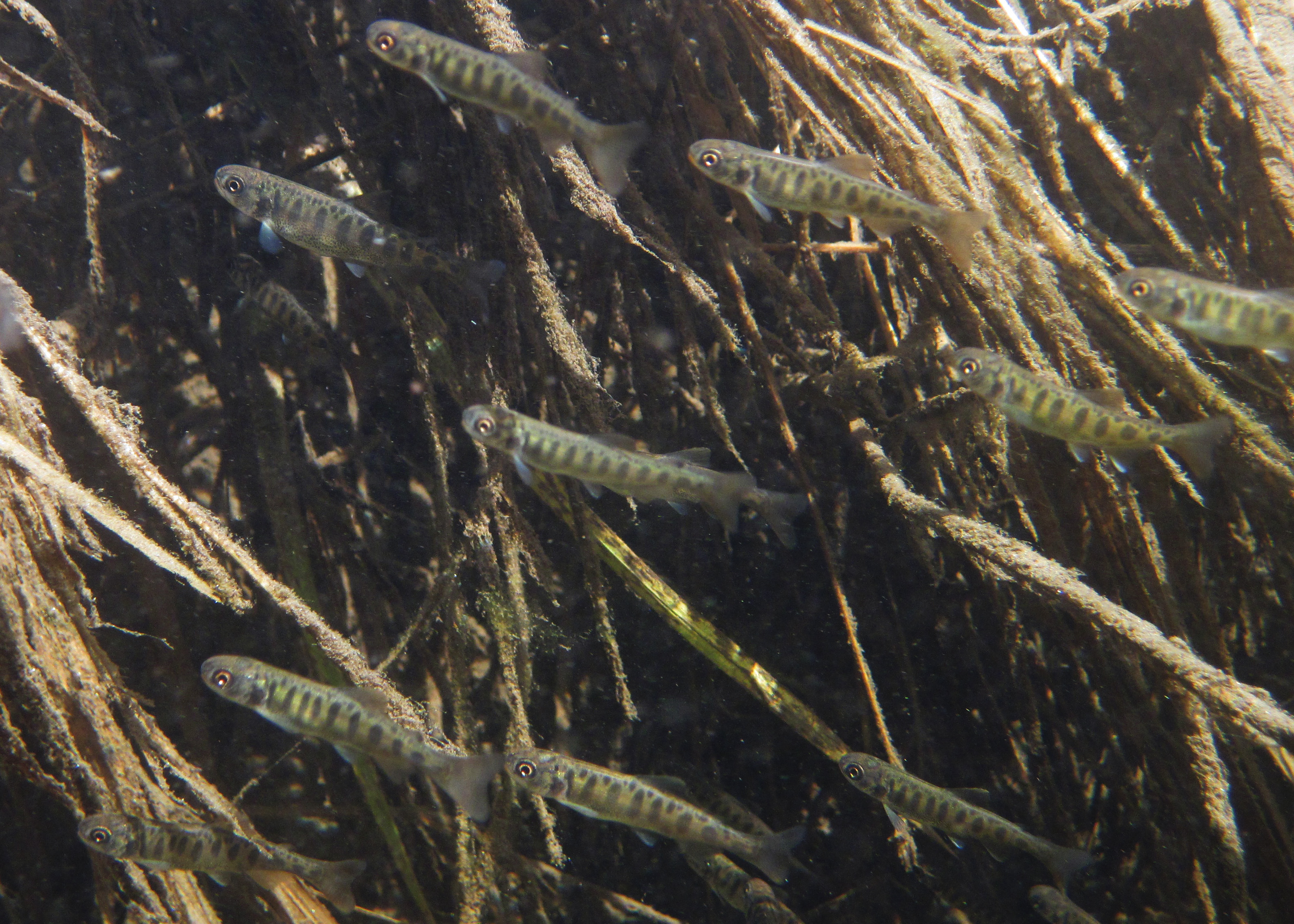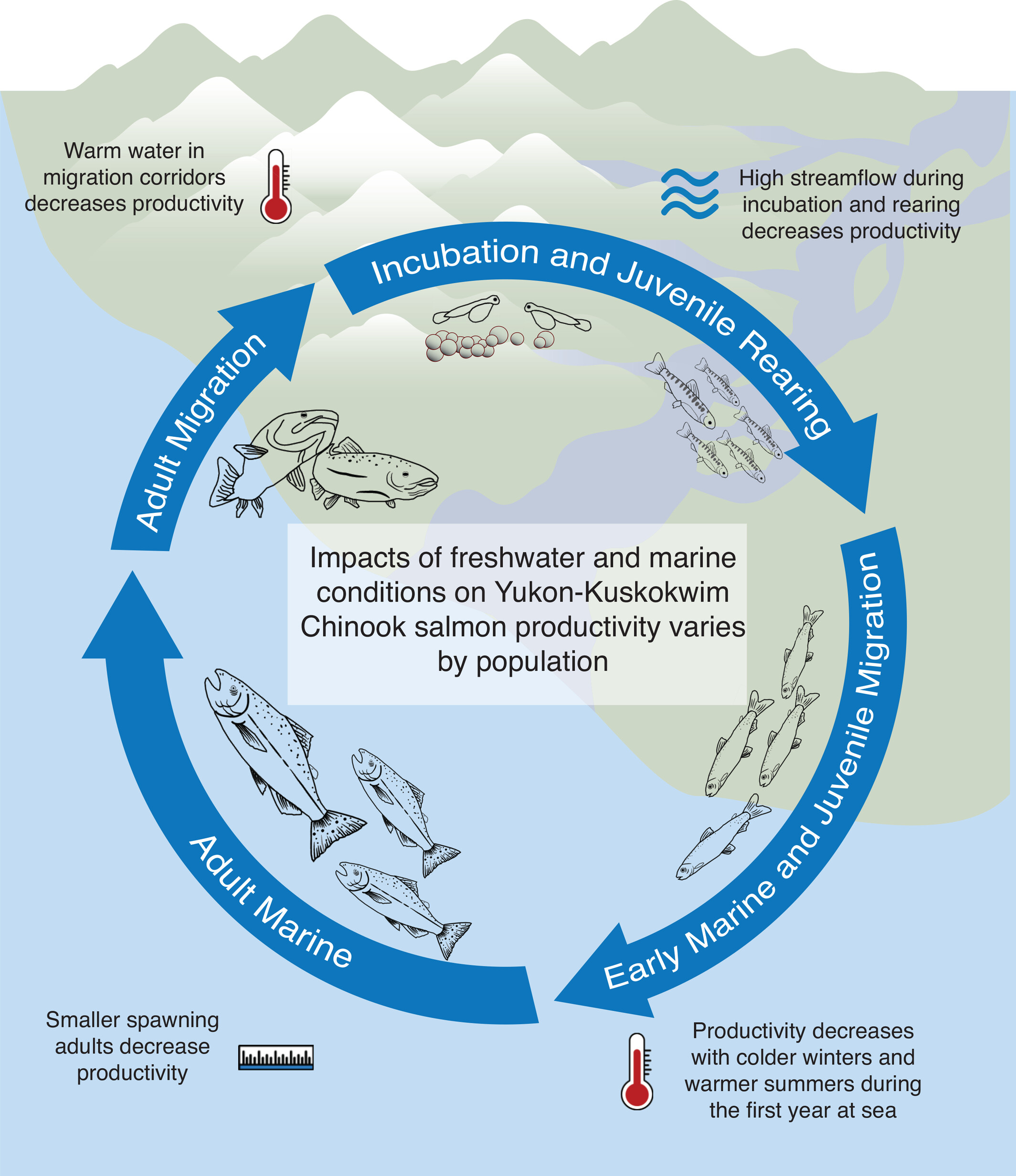King salmon declines linked to climate, smaller size
Chynna Lockett
907-474-1880
Nov. 26, 2024

Young king salmon swim in the Chena River, part of the Yukon River watershed, in 2011.
King salmon have sustained people in Alaska for at least 12,000 years, but over the past three decades their populations have begun to dwindle. Researchers at the University of Alaska Fairbanks linked these declines to reduced body size and extreme climate conditions in the ocean and in rivers.
Their study, published in October by Global Change Biology, focuses on the Yukon and Kuskokwim river watersheds in Alaska and Canada. These are the two largest rivers in Alaska, and until recently they supported the largest subsistence fisheries for king salmon in the world.
King salmon declines in the region have led to fishery closures and had profound impacts on rural and Indigenous communities. Previous research has investigated how climate affects a few well-studied populations in the region and separately how climate affects body size. This is the first study to compare the effects of both climate and body size on a large number of populations throughout the two river basins.
“This project was designed to understand how individual populations differ in their response to environmental conditions and identify shared characteristics,” said Megan Feddern, who led the project as post-doctoral researcher with the UAF College of Fisheries and Ocean Sciences. “It helps interpret the environment king salmon experience and how it relates to abundance.”
Researchers used data collected by agencies and tribes to estimate how many salmon spawned each year and the numbers of their offspring that returned to the fishery and spawning grounds. They cross-referenced more than 30 years of climate data from the U.S. and Canada with 26 different king salmon populations in the region.

This graphic illustrates challenges in a typical life cycle for king salmon in the Yukon and Kuskokwim river watersheds.
All of these salmon were impacted by extreme conditions, like unusually cold winters and warm summers, during their first year in the Bering Sea. Other effects were more localized. When Yukon River temperatures were above average during the spawning migration, fewer salmon returned in the next generation. But river temperature had little effect on the Kuskokwim populations. Overall, the study found body size had a larger impact than water conditions on Yukon River salmon.
“The size of king salmon in the Yukon River is an important factor in determining the number of offspring that are produced and survive to adulthood to spawn the next generation,” said Feddern.
Erik Schoen, co-author of the study and a research assistant professor at the UAF International Arctic Research Center, said understanding salmon responses could help to improve forecasts and support future populations.
“King salmon have been returning to the Yukon and Kuskokwim at smaller sizes over the past 40 years as the climate has changed,” Schoen said.
This matters because now more salmon may need to return to the spawning grounds to lay enough eggs for populations to recover, he said.
“This isn't just about putting meat in the freezer,” Schoen said. “It's also about families passing along cherished cultural traditions to their kids and grandkids at fish camps where their ancestors fished for generations.”
117-25



